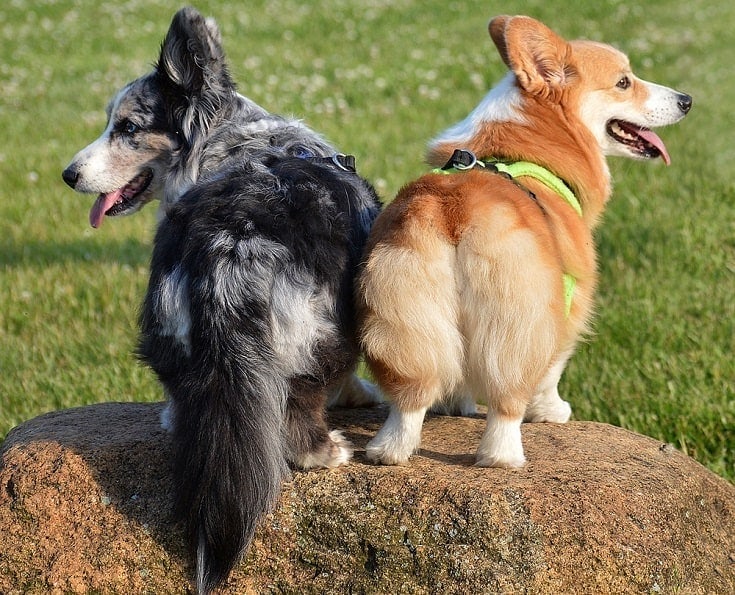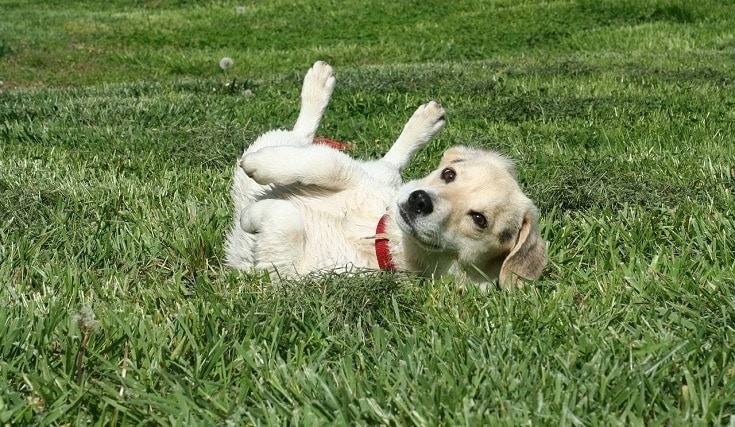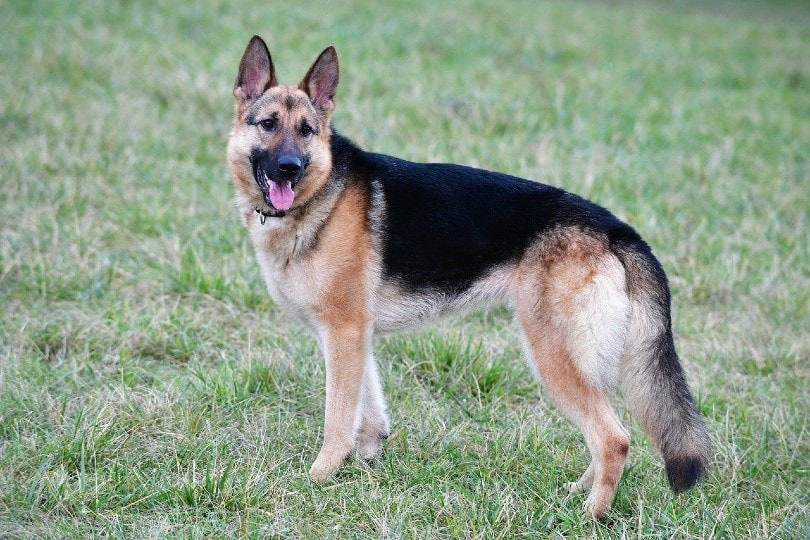9 Best Dog Foods for Labradors in 2024 – Reviews & Top Picks

Updated on
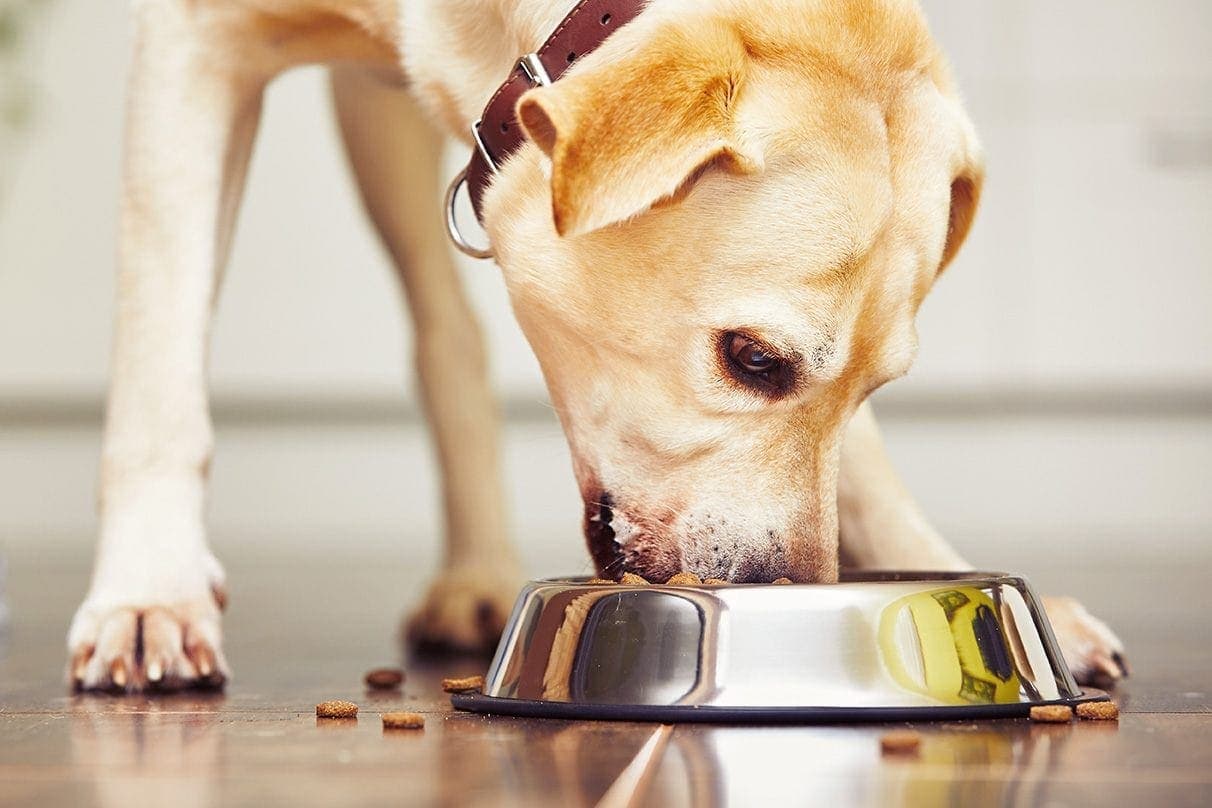
You probably have noticed something that’s changed in the dog food aisle. It’s become bigger, with a bewildering array of choices. That’s what makes choosing a product for your Labrador so difficult. Where do you start? Interestingly, over 96 percent of dog owners opt for dry food.1 However, that’s only scratching the surface.
Suffice to say that pet food and treats are big business to the tune of nearly $37 billion in 2019.2
As a Labrador owner, you’re in good company. The breed is the number one in popularity, according to the American Kennel Club (AKC).3 We certainly understand why. He’s a large dog, weighing in at up to 80 pounds.4 Therefore, he needs food to match his size. Our guide will help point you in the direction of a suitable choice with tips and reviews along the way to help you decide.
A Quick Comparison of Our Favorites in 2024
| Rating | Image | Product | Details | |
|---|---|---|---|---|
| Best Overall |
 |
Nom Nom Fresh Dog Food |
|
Click to Save 50% + Get Free Shipping! |
| Budget Buy |

|
Iams ProActive Health Adult Dry Dog Food |
|
Check Price |

|
Royal Canin Labrador Retriever Puppy Dry Dog Food |
|
Check Price | |

|
Hill's Science Diet Adult Large Breed Dry Dog Food |
|
Check Price | |

|
Royal Canin Labrador Retriever Adult Dry Dog Food |
|
Check Price |
The 9 Best Dog Foods for Labradors
1. Nom Nom Fresh Dog Food Subscription – Best Overall
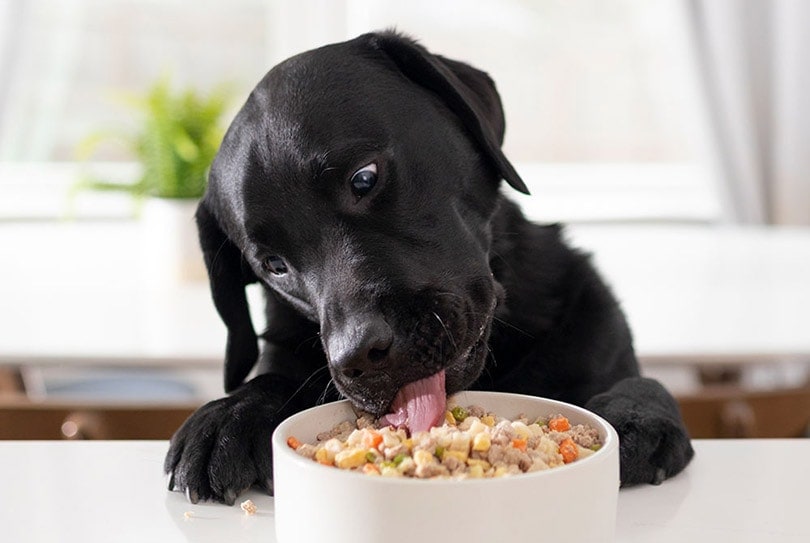
Labradors are often listed as one of America’s favorite dog breeds. And what’s not to love about them? Labradors are known for being loyal, high-energy, and perfect family pets. They’re also known for their high energy levels and beautiful, shiny coats.
And one of the best things that you can do for your Labrador is to give it the nutrients that it needs to stay vibrant and strong. Enter Nom Nom Dog Food. Nom Nom is one of the top-selling dog food delivery services and it’s recommended by vets worldwide.
Nom Nom offers pre-portioned meals for both dogs and cats. Their meals are tailored to meet the daily nutritional requirements of each specific pet and they offer a variety of different vitamins and supplements for a well-balanced diet. So if you’re looking to get the best dog food for your Labrador with respect to nutrition, then Nom Nom may be a service worth trying.
The delivery system makes feeding your dog convenient. All the food is pre-packaged and delivered fast directly to your home. Nom Nom also makes it easy to customize your delivery times for your convenience and you can also try different meals to see how well your lab takes to each one. It can be a bit pricey and this food isn’t available in stores, but otherwise, it’s a great food.
- Numerous recipe options
- High-quality ingredients
- Customized meal options
- Access to veterinarians
- Offers recipe samples
- Subscription service may not be for everyone
2. Iams ProActive Health Adult Dry Dog Food – Budget Buy

Iams ProActive Health Adult Dry Dog Food proves that you don’t have to lay out a lot of cash to get the best dog food for Labradors for the money. It is also a chicken-based protein, which makes it easy to digest, especially for pups with sensitive GI systems. Like Hills, the manufacturer focuses on tailored nutrition for specific breeds. We appreciate this approach, particularly with popular ones.
The food also includes fruits and vegetables because the debate continues whether dogs are carnivores or omnivores. We appreciate the company’s commitment to responsible marketing with a product that is emotionally charged. Unfortunately, it doesn’t include added taurine for heart health. Iams ProActive Health Adult Dry Dog Food is 351 calories per cup. The food comes in 15, 30, and 38.5-pound bags.
- Grain-based
- Well-rounded ingredient list
- High protein content
- No added taurine
3. Royal Canin Labrador Puppy Dry Dog Food
Royal Canin Labrador Retriever Puppy Dry Dog Food has a lot going for it. It is formulated to the particular needs of the breed, which we appreciate. Chicken byproducts are the first ingredient, which is a good thing. It means a denser source of this protein since whole meat is primarily water. It also contains glucosamine, an ingredient that is essential for dogs prone to mobility issues.
The dog food is expensive. The salt on the wound is worsened by the fact that the calorie count is lower than comparable products. That means you’ll feed your Lab more to meet his energy needs, which makes the cost factor more of an issue. On the positive side, it includes taurine in a decent amount that exceeds what we typically see in these foods.
- Breed-specific
- Well-rounded ingredient list
- Expensive
- Low calorie count
4. Hill’s Science Diet Adult Large Breed Dry Dog Food
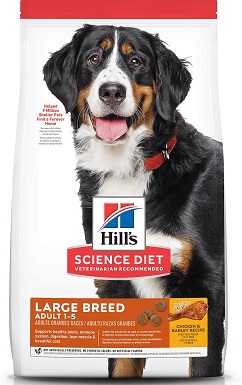
The reputation and painstaking efforts of the manufacturer are enough to put Hill’s Science Diet Adult Large Breed Dry Dog Food on our list. The USA-based company puts nutrition first, with a team of Ph.D. nutritionists on staff. This product is chicken-based that exceeds the recommended nutritional requirement for protein. It is the source of its fat content, too.
We liked the fact that the dog food contains glucosamine and chondroitin because of the breed’s risk of arthritis. It has omega fatty acids to keep your Lab’s coat looking its best. The food also contains whole grains, a positive thing for Lab owners, as we’ll discuss later. It contains 368 calories per cup, with a healthy dose of carbs and fiber. You can get the food in either 15 or 35-pound bags.
- Digestible proteins
- Completed and balanced nutrition
- Grain-based
- Lack of a larger size bag
5. Royal Canin Labrador Retriever Adult Dry Dog Food
The one thing that stands out with Royal Canin Labrador Retriever Adult Dry Dog Food is how well-tuned it is to the breed, both physiologically and behaviorally. The nutritionist team knows the behavior and eating habits of Labs to develop a food that tries to lower the risk of health issues like obesity. The formula and even the design of the kibble try to keep their gobbling in check.
The glucosamine is higher than we usually see, which doesn’t go unnoticed. Unfortunately, it’s expensive, like the brand’s puppy food. This one comes in even lower at 275 calories per cup. However, it has a high protein content which is chicken-based. We liked the fact that the manufacture is USA-based. It comes in a 17 or 30-pound bag.
- Breed-specific with a focus on their eating habits
- Contains taurine
- High protein content
- Expensive
- Low calories count
6. Purina ONE SmartBlend True Instinct Dry Dog Food
Purina ONE SmartBlend True Instinct Dry Dog Food contains a high amount of protein from a low-fat source, venison. There is also turkey and chicken added to the mix. It also has glucosamine for joint health, which is essential for Labradors. It contains both omega 6 fatty acids and linoleic acid for good coat health.
The nutrient profile is excellent with AAFCO approval. Unfortunately, the fat content is high for a dog that has a tendency toward weight gain. It also doesn’t have added taurine. The kibble is in a good size and shape that your Lab will love—as if he needs the motivation to eat. It comes in 15, 27.5, and 36-pound bags. It is 341 calories per cup.
- All-purpose food
- Low-fat protein source
- AAFCO-approved
- No added taurine
- High fat content
7. Hill’s Science Diet Adult Perfect Weight Dry Dog Food

Hill’s Science Diet Adult Perfect Weight Dry Dog Food is a diet for all life stages, geared toward healthy weight maintenance. It is a chicken-based kibble with coconut oil and flaxseed, providing the fat. It also has brown rice in the formula to help ease digestive issues in pups with sensitive stomachs. The calorie count is 291 calories per cup.
The company changed the kibble size of the product, which might be troublesome for some pets like a Lab that tends to gobble his food. You might find that you’re going through bags quickly because of it. It comes in 4, 15, and 28.5-pound bags. A larger size would be welcome for larger breeds like a Labrador.
- Excellent fiber content
- Digestive system support
- Contains taurine
- Small kibble size
- No large bag size
8. VICTOR Hi-Pro Plus Formula Dry Dog Food

VICTOR Hi-Pro Plus Formula Dry Dog Food covers all the bases with protein, containing beef, pork, chicken, and fish. It comes in at 30%, which is well over the recommended 18%. It also has several fermentation-based ingredients, along with extracts that offer little value to Labs or any dog. The fat percentage is high at 20%, which accounts for the higher calorie count per cup at 406.
The food comes in 5, 15, 40, and 50-pound bags. You’d think with a product that comes in that size that you could feed it to large dogs like Labradors. Unfortunately, that’s not the case for pups over 70 pounds. The high calorie count would likely lead to weight gain.
- Value priced
- Contains taurine
- Some low-value ingredients
- Not suitable for large breeds over 70 pounds
9. Gentle Giants Canine Nutrition Chicken Dry Dog Food

Gentle Giants Canine Nutrition Chicken Dry Dog Food is a chicken-based diet that also gets its fat from the same source. The content is in line with the nutrient guidelines. It also contains a host of dried ingredients like blueberries and peas. There are also several fermentation products and probiotics that may offer little value.
On a positive note, the dog food also has taurine and glucosamine, which we always like to see in a diet meant for Labs. The calorie count is a reasonable 358. While the fat content meets the requirements, the wide variety of ingredients can make this food too rich for some Labs with sensitive digestive systems. The product comes in 3.5, 7.5, 15, and 30-pound bags.
- Contains taurine
- Lean protein source
- Too rich for some pets
Buyer’s Guide: Choosing the Best Dog Food for Labrador Retrievers
Besides routine pet care, your choice of dog food is the largest expense you’ll have with owning a pet, especially with a large pooch like the Labrador Retriever. As you’ve likely noticed, there are dozens of foods from which to choose. It’s no wonder then that it’s a difficult choice, given the fact that it’s essential for your pet’s health.
We understand your concerns.
Our guide will walk you through the process of picking one that is appropriate for your canine best friend. We’ll give you advice about how to read a pet food label and wade through the marketing that is sometimes confusing and misleading. We know that you want the best for your pooch. The vital things to consider are:
- Life stage
- Breed size
- Nutritional value
- Grain-free or grain-based
- Wet or dry
- Calories per day
Life Stage
The caloric and nutritional needs of your Labrador Retriever will vary by age. Puppies need more of both to support their development. Adults, on the other hand, should only get food meant for Labs in this life stage. As a larger dog, he will grow slower than a smaller one like Papillon. It may take him up to 16 months to reach adulthood.
The Association of American Feed Control Officials (AAFCO) recognizes these life stages:
- Growth, i.e., puppies
- Maintenance
- Gestation-lactation
- All life stages
Look for this information on the food label to pick the product that is suitable for your Lab at his age.
Breed Size
As we mentioned, different breeds grow at varying paces. That’s why it’s also essential to get a food meant for large dogs like the Labrador Retriever. The reason is that diets for smaller dogs are more nutrient-dense, i.e., they have more calories. The ones for bigger canines have fewer to support their growth rate.
Feeding your Lab a dog food meant for a Pomeranian will lead to weight gain.
Many companies, like Royal Canin, manufacture foods tailored to specific breeds and their unique dietary needs. However, the essential thing to remember is to feed your pooch a diet formulated for dogs of his size.
Nutritional Value
Nutritional value is the money shot. That’s one of the primary things that distinguishes an excellent food versus a poor choice. Your best guide is the AAFCO’s nutrient profiles. You can find the minimum and maximum ranges for macronutrients like protein as well as vitamins and minerals. You can compare their figures with the guaranteed analysis on the package label.
A shortcut is to look for a statement saying that the product meets the AAFCO’s nutritional levels, making it complete and balanced. The first term means that everything that’s supposed to be in it is there. The second word confirms that they are present in the correct proportions. Remember that adequate nutrition is the best way to ensure a good quality of life for your BFF.
Let’s discuss the ingredients. There are several misconceptions about the different ones you’ll see on a package. What you’ll see is them listed by weight from the most to the least. It’s one area where marketers are selling you on a product. First, byproducts are not a bad thing.
They do not contain added chemicals.
They are not from animals that died on the way to slaughter.
Instead, byproducts are the leftovers that don’t make it to your kitchen table. That may include organ meats. However, they are not unsafe for your pooch. They may be processed, but it’s necessary to prevent bacteria that would make them harmful for your pet—and you from handling it!

Grain-Free or Grain-Based?
This question is one that is still being written. However, it has serious implications for owners of Labrador Retrievers because of a possible association between these diets and dilated cardiomyopathy (DCM). Both cats and dogs are susceptible. The concern is that there has been an increase in this sometimes life-threatening condition in recent years, prompting the FDA to investigate it.
One of the common variables in the cases has been feeding a grain-free diet and low taurine levels. Labrador Retrievers, unfortunately, are one of the breeds most often inflicted. To be fair, the jury is still out about whether these diets or the substitutions for grains that they use are the culprits. We recommend that you discuss the matter with your veterinarian before switching to a grain-free dog food.
Wet or Dry?
Whether you feed your Lab canned or dry food is a matter of choice. Kibble is more convenient and less expensive than wet food. It’s also eco-friendlier. On the other hand, it’s easier to know how much you’re feeding your dog with wet food. That’s a good thing since a pooch as food-motivated as a Retriever is likely to overeat if you leave kibble available all the time.
Calories per Day
We’re going to ask you to do a little math to help with this factor. The calories that your Lab should get a day have many variables, some of which have nothing to do with food. There’s his size and shape for one. The idea with a healthy diet is that he maintains an ideal weight, too. That will vary with his activity level and the environment. He’s going to burn more calories when it’s cold than when it’s hot outside.
Unfortunately, it’s not a myth that dogs gain more weight after spaying or neutering. The research says yes. You also have to consider your Lab’s state of health. An arthritic dog will be less active than a young pup. Factor in other things like how often you walk him or take him to the doggie park. The Pet Nutrition Alliance has a handy calorie calculator to simplify the task.
It’ll provide a recommendation for daily intake based on your Lab’s current weight and his body condition. Armed with this knowledge, you can figure out how many cups of dog food he should get with the brand you’re giving him. Divide that number by the times you feed your pooch to determine what he should get for each meal. That wasn’t so bad, was it?
Conclusion
The choice of the best dog foods for Labs is a vital one. Our top pick is Nom Nom Dog Food because of its tailored nutrition for your for large breeds like the Labrador Retriever.
Our best value pick of our reviews is the Iams ProActive Health Adult Dry Dog Food is a high-protein diet at an affordable price. However, it doesn’t skimp on the nutrition, making it an excellent value. It delivers everything your Lab needs. After all, a healthy diet is an essential foundation for a good quality of life. These foods help to provide the nutrients that your pooch needs.
- You may also be interested in: Retriever Dog Food Review: Recalls, Pros & Cons
Featured Image Credit: Jaromir Chalabala, Shutterstock








